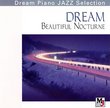| All Artists: Johann Adolf Hasse, Epoca Barocca Title: Hasse: Sonatas and Trio Sonatas Members Wishing: 0 Total Copies: 0 Label: Chandos Release Date: 11/23/2004 Genre: Classical Styles: Chamber Music, Historical Periods, Baroque (c.1600-1750), Classical (c.1770-1830) Number of Discs: 1 SwapaCD Credits: 1 UPC: 095115071120 |
Search - Johann Adolf Hasse, Epoca Barocca :: Hasse: Sonatas and Trio Sonatas
 | Johann Adolf Hasse, Epoca Barocca Hasse: Sonatas and Trio Sonatas Genre: Classical
|
Larger Image |
CD DetailsSimilar CDs |
CD ReviewsGreat Hasse HSIEH CHENG CHUNG | Taipei, Taiwan | 08/13/2007 (5 out of 5 stars) "Most of Hasse's pieces released to discs were oratorios and operas, and in fact he were treated to the famous opera composer. However, now we shouldn't be ignore of his performance on trio sonatas after listenning this disc. Whatever composition structure or melody, Hasse were also mature and outstanding between contemporaries, ex Handel, Popora, Vivaldi. I recommand it as a outstanding instrumental music to you." Art for Fun's Sake Giordano Bruno | Wherever I am, I am. | 11/14/2008 (5 out of 5 stars) "There's nothing that's not simply entertaining about this music. No pathos nor profundity, no troublesome originality, no outrageous virtuosity, just pure diversion for the players and the listeners. I've been both. The bassoon parts are sprightly enough to be fun sight-reading with your musical homeys yet gracious enough to be fine concert program material. The Sonata in F major, scored for the rare combination of oboe, bassoon, and chalumeau, puts me in a pickle, since I can't play two instruments at once, except in my head. Interesting parts for the chalumeau are scarce enough, however, to make the choice easy for anyone who actually has a chalumeau at hand.
It's more than likely that such 18th C chamber music was composed and published for domestic music-making rather than for any concert hall performance. The "domus" in this case was unusually ample -- either the palace of August the Strong or the 'Sans Souci' of Frederick the Great. In fact, several of the sonatas on this CD were originally scored for flute rather than oboe, and any time a German composer of the 18th C wrote anything for flute, one is justified in suspecting that Frederick II of Prussia was watching. Wouldn't it be fun to hear a "recording" of the royal flautist, to get an idea of how good he actually was! Substitutions of various instruments ad libitum was the commonest practice in the period, even when it required transposition and/or redistribution of notes to suit the ranges. Likewise, the choice of bassoon, cello, or gamba was more a question of availability than of aesthetic intentions. "Epoca Barocca" has made several such opportunistic choices in preparing this CD, and the concert results are interesting. I suspect they could have played any given sonata twice -- strings only, then reeds only -- and the resultant musical "affect" would have sounded so distinct that a listener might not have noticed the duplication. By Saint Göran, I think I'll try that some day! Epoca Barocca is a period-instrument ensemble. The bassoon you will hear is a transitional instrument, half way between the diatonic one-keyed dulcian of the Renaissance and the fully chromatic many-keyed modern horn. The 18th C bassoon can sound a little rustic until you begin to hear its subtleties of timbre, its intimate human-voice qualities. More or less the same can be said of the late Baroque oboe; there's a trade-off, which you'll notice, of precision for expressiveness. The chalumeau is obviously the progenitor of the single-reed clarinets, basset horns, and even the saxophones of later eras. Unfortunately, the chalumeau played so smoothly by Christian Leitherer on this CD is not pictured in the notes. It's a modern copy of an instrument by Johann Denner, however, so I can guess that: the reed is probably wider, the ligature is string, the instrument has only minimal keys and no overblow key, so the range is limited to perhaps an octave and a half. There is some historical evidence that chalumeau-players of the 17th C played with the reed on top of the mouthpiece, but almost nothing is known about chalumeau technique in Hasse's era. All technical matters aside, the sound of the chalumeau is rather like a clarinet wrapped in velvet, and the Sonata in F major is a mellow delight. There's wit and variety in these six sonatas, enough to make them worthy of close listening, but they've also a perfect choice for ambience at a dinner party or while trimming one's orchids... or whatever, "whatever" being their likeliest musical provenance." |

 Track Listings (24) - Disc #1
Track Listings (24) - Disc #1

